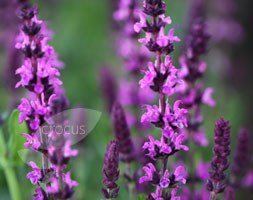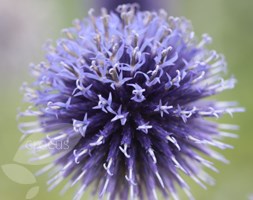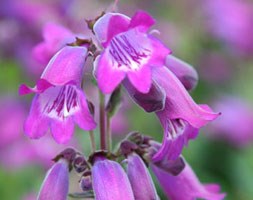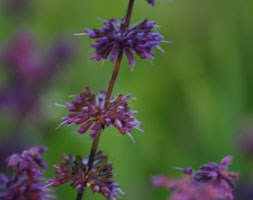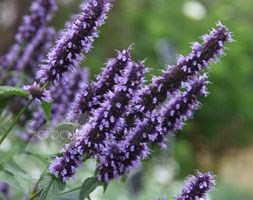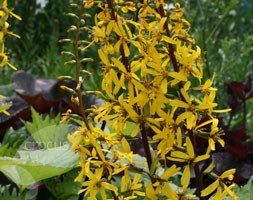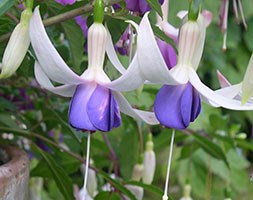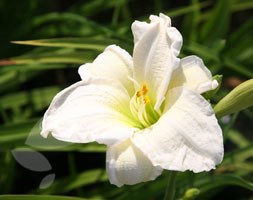Price reductions at Crocus
by Sarah - June 30th, 2014.Filed under: Crocus, Price Reductions.
Reduced items at Crocus
Salvia x sylvestris ‘Rose Queen’ (sage) was £7.99 now £5.99
Position: full sun or partial shade Soil: light, moderately fertile, humus-rich, moist but well- drained soil Rate of growth: average Flowering period: June and July Flower colour: bright rose-pink Other features: attractive to butterflies and bees; wrinkled, grey-green leaves Hardiness: fully hardy Slender spires of bright rose-pink flowers, which open from dark pink buds from early to midsummer, look lovely and attract butterflies and bees to the garden. ‘Rose Queen’ is perfect for filling gaps left by spring-flowering plants in the middle of a moist, well-drained herbaceous border. Garden care: To prolong flowering remove the flower spikes as soon they start to fade. Apply a generous 5-7cm (2-3in) mulch of well-rotted garden compost or manure around the base of the plant in spring.
Echinacea purpurea (coneflower) was £7.99 now £5.99
Position: full sun Soil: most soils, except very dry or boggy Rate of growth: average Flowering period: June to September Hardiness: fully hardy Large, rich rosy-purple, daisy-like flowers with prominent orange-brown centres on stiff stems appear from June to September. One of our recommended p lants, it’s tough and does not need staking and makes an excellent cut flower. Like other coneflowers, it is long-flowering and will cope well with adverse we ather conditions, except drought. Try it dotted through a sunny, mixed border or in bold drifts among grasses where it will extend the season of interest. It is attractive to bees and butterflies, and birds will flock to the seedheads. Garden care: Lift and divide congested colonies in autumn or spring. In autumn cut back all dead flower stems to the ground. Coneflower s benefit from a spring or autumn mulch with well-rotted compost.
Echinops ritro ‘Veitch’s Blue’ (globe thistle) was £7.99 now £5.99
Position: full sun or partial shade Soil: poor, well-drained soil Rate of growth: average Flowering period: August Hardiness: fully hardy Ever popular for their globes of blue flowers that attract hoards of insects, gl obe thistles bring a natural look to the garden. This handsome blue variety is ideal for the middle or back of a sunny, well-drained border. It makes a particularly good cut or dried flower. Garden care: Cut down to the ground after flowering to encourage a se cond flush of flowers. Lift and divide congested colonies in autumn or spring.
Penstemon ‘Sour Grapes’ (beard tongue) was £7.99 now £5.99
Position: full sun or partial shade Soil: fertile, well-drained soil Rate of growth: average Flowering period: July to October Hardiness: frost hardy (will need winter protection in cold areas) Elegant spikes of small, tubular, foxglove-like flowers appear from July to October among lance-shaped, bright green leaves. This easy-to-grow perennial will quickly form large, leafy clumps and is perfect for adding a splash of colour to the middle of a sunny, well-drained border. If you deadhead regularly, the flowers will persist until the first frosts. The magenta-blue flowers of this penstemon have a metallic sheen, reminiscent of black grapes, which contrasts particularly well with deep purples and blues. Garden care: Remove the faded blooms regularly to prolong flowering. Apply a dry mulch around the base of the plant to protect the roots from frost damage and cut back in spring when new shoots appear low down on the stem. Lift and divide congested clumps in spring.
Salvia verticillata ‘Purple Rain’ (salvia) was £7.99 now £5.99
Position: full sun Soil: moderately fertile, moist but well-drained soil Rate of growth: average Flowering period: May to August Flower colour: reddish-purple Hardiness: fully hardy Selected by the renowned Dutch plantsman Piet Oudolf as one of his favourites, this is a cracking plant. The softly hairy leaves are quite a dark green, while the upright, branching flowerspikes, carry reddish-purple stems and flowers throughout summer – the combination of which creates a rich hue that is perfect for ‘bruised’ colour schemes. This spreading plant is easy to grow and tolerant of a wide range of soils, but prefers a spot in full sun. Garden care: To prolong flowering remove the flower spikes as soon they start to fade. Apply a generous 5-7cm (2-3in) mulch of well-rotted garden compost or manure around the base of the plant in spring. Avoid excessive winter wet, and deadhead after flowering if you want to prevent it self-seeding.
Agastache ‘Blackadder’ (hyssop) was £7.99 now £5.99
Position: full sun Soil: well-drained, fertile soil Rate of growth: average Flowering period: July to October Hardiness: hardy (borderline) Hyssops are great for adding height to a border, with whorls of long-lasting, tiny flowers arranged like a bottlebrush and pointed, aromatic fresh green leaves that are attractive to butterflies. They are short-lived though, and may need replacing every few years, especially after a cold or wet winter. ‘Black Adder’ has smoky, violet flowers on long spires from July to October. Try it as part of a Mediterranean scheme or in a sunny, well-drained border among ornamental grasses. Garden care: Don’t cut back the faded flower-stems until early spring, as they provide interest in the winter months. Lift and divide congested colonies in spring.
Ligularia ‘The Rocket’ (golden groundsel) was £7.99 now £5.99
Position: full sun Soil: fertile, deep, moist soil Rate of Growth: average to fast Flowering period: July to August Flowers: yellow Hardiness: fully hardy Slender spikes of brilliant yellow flowers on dramatic, black stems zoom above large, handsome, boldly toothed leaves in July and August. This towering deciduous perennial makes a striking specimen plant for a moist, sunny border or bog garden. Or try it beside water, and make sure it has protection from th e strong, midday sun. Garden care: Protect the young shoots from slug damage using beer traps or environmentally -friendly slug pellets. The plant must be kept moist; line the plant hole with plastic, making a couple of holes in the plastic for drainage. Water regularly during periods of drought. Lift and divide large clumps in spring or after flowering. Apply a generous 5-7cm mulch of well-rotted manure or garden compost in spring.
Fuchsia ‘Delta’s Sara’ (fuchsia (syn Fuchsia Deltas Sarah )) was £11.99 now £6.99
Position: full sun or partial shade Soil: fertile, moist, well-drained soil Rate of growth: fast-growing Flowering period: June to October Hardiness: borderline hardy ( may need winter protection) A newly introduced, hardy Fuchsia, that produces large, white and violet-blue flowers, which seem to drip from the branches for a long period throughout summer and autumn. Wonderful for adding lashings of colour to a mixed border, it will also flourish in a gererously-sized pot and can be under-planted with seasonal bedding. Garden care: To encourage growth, pinch out the growing tips of young plants after the sixth or seventh pair of leaves. During the growing season water regularly, applying a balanced liquid fertiliser each month. Cut back to the permanent framework in early spring.
Hemerocallis ‘Gentle Shepherd’ (daylily) was £8.99 now £6.99
Position: full sun Soil: fertile, moist, well-drained soil Rate of growth: average Flowering period: July Hardiness: fully hardy Masses of ivory-white flowers lasting just one day appear continuously in midsummer on slender, upright stems. In mild areas it is semi-evergreen and forms large clumps of strap-like leaves, valuable for suppressing weeds and disguising the dying foliage of spring-flowering bulbs. This elegant daylily looks gorgeous planted in drifts in a sunny mixed or herbaceous border, or beside a pond or water feature. Like most hemerocallis, it is robust and easy to grow, provided you follow the tips below. Garden care: The Greek term ‘hemerocallis’ means ‘beautiful for a day’, and daylilies need regular deadheading to prolong flowering and prevent their unsightly deadheads from dominating the scene. Each stem carries several flowers, so snap off each flower as it fades. When the stem has finished flow ering, cut it down to the ground. After the plant has finished flowering altoge ther, pull out the dead leaves. When the foliage is looking tatty, cut it down to the ground and fresh new growth will appear. Lift and divide every three years in spring to keep the rhizomes vigorous and apply a generous 5-7cm (2-3in) mulch of well-rotted garden compost or manure around the base of the plant. Water frequently from spring until the buds appear.







